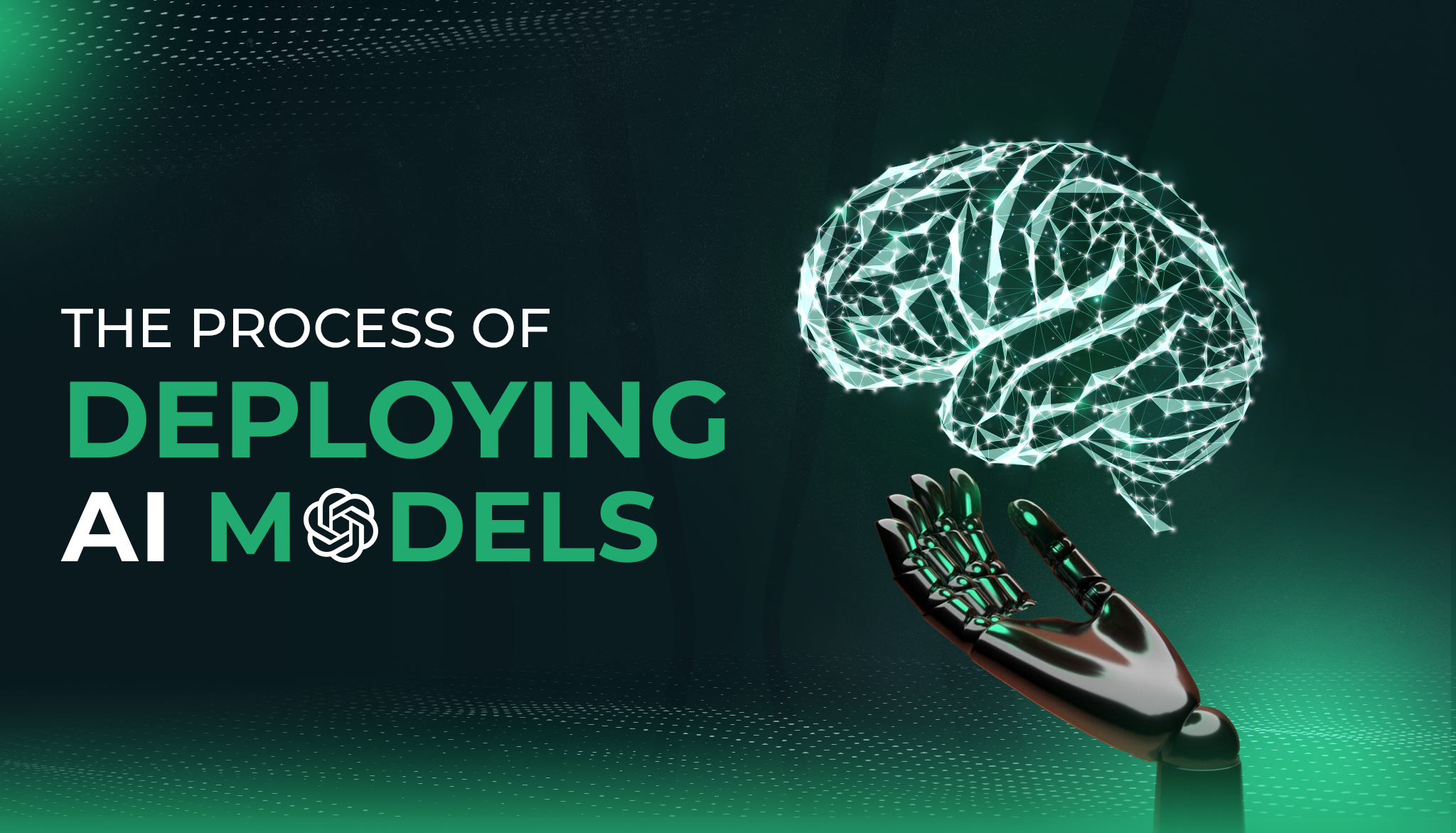In recent years, the field of artificial intelligence has been rapidly advancing, with more and more companies looking to implement AI models into their business operations. Today one of the most advanced and widely known AI firms is Open AI. Open AI is especially known for its sophisticated machine-learning models and natural language processing capabilities.
Deploying Open AI models in your projects can enhance the efficiency and effectiveness of various applications, but the process of deploying these models is a little complex. In this blog, we will explore the step-by-step process for deploying Open AI models and the key considerations to remember.
Understanding Open AI:
What is Open AI:
OpenAI is a private research laboratory that aims to develop and direct artificial intelligence (AI) in ways that benefit humanity as a whole. The company was founded by Elon Musk, Sam Altman, and others in 2015 and is headquartered in San Francisco.
The mission of Open AI is to ensure that artificial general intelligence (AGI) will be a beneficial tool for all, whether it be an everyday user to big corporations utilizing it in their products. Today Open AI has developed many advanced AI models and tools that have helped enhance the user experience and aid in the day-to-day tasks of users worldwide.
Some key achievements of Open AI are:
Advanced Machine Learning Models:
OpenAI has developed some of the field’s most sophisticated and influential machine learning models, including the Generative Pre-trained Transformer (GPT) series, such as GPT-2, GPT-3, and the latest and the most powerful iteration GPT-4. These models have demonstrated impressive capabilities in natural language understanding, text generation, and other AI tasks.
Natural Language Processing (NLP) Capabilities:
OpenAI’s models, particularly those in the (GPT) series, are one of the most sophisticated natural language processing models. They can understand, generate, and manipulate human-like text with extreme fluency, enabling various applications to understand language, translation, summarization, and more.
Image Recognition and Generation:
In addition to Natural Language Processing (NLP), OpenAI has made computer vision models like CLIP (Contrastive Language-Image Pre-training) and DALL-E. These models can understand and generate images based on textual prompts, allowing users to create impressive visuals and showcase their creativity.
Research and Innovation:
OpenAI actively share their discoveries, insights, and ideas with the AI community. By regularly publishing research papers and engaging with the community, OpenAI contributes to the growth of AI technology. Their commitment isn’t just about building impressive models; it’s about creating an environment where everyone can contribute to and benefit from the advancements in AI.
Steps for Deploying Open AI Models:
Step 1: Data Preparation
The first step in deploying an Open AI model is to first collect the data and then prepare that data that will be used for training and evaluation. This involves collecting data from multiple sources and then cleaning and filtering it to fit the needs of the model, data must be of high quality and relevant to the task at hand, as this would impact the accuracy of the model. Data preparation is critical for the success of the AI model, as the quality of the data directly impacts the model’s performance.
Step 2: Model Selection
Once the data is prepared, the next step is to select the appropriate OpenAI model for the task. OpenAI offers multiple pre-trained models, each tailored to specific applications and domains:
Natural Language Processing:
GPT-3 (Generative Pre-trained Transformer 3): Renowned for its advanced capabilities in natural language understanding and generation, GPT-3 excels in various NLP tasks, including text generation, translation, summarization, and more.
GPT-4 (Generative Pre-trained Transformer 4): Building upon the success of its predecessor, GPT-4 is an even more sophisticated NLP Model, it is capable of understanding and generating content more efficiently, making it an ideal choice for demanding NLP applications.
Text-to-Speech (TTS):
OpenAI provides models for converting text into natural-sounding spoken language, catering to applications like audiobooks or voice assistants. These models offer options for both speed and quality prioritization which makes them ideal for multiple use cases.
Image Recognition and Generation:
CLIP (Contrastive Language-Image Pre-training): Designed to understand the relationship between images and their corresponding textual descriptions, CLIP enables tasks such as image classification, object detection, and image captioning by leveraging both visual and textual modalities.
DALL-E: An innovative model capable of generating highly realistic images from textual descriptions, DALL-E opens new paths for creative expression and visual content generation.
Reinforcement Learning:
Gym from OpenAI: Open AI Gym, While not a specific model per se, provides a toolkit for developing and comparing reinforcement learning algorithms. It offers a diverse set of environments and challenges for training and evaluating reinforcement learning (RL) agents across various domains.
Codex:
Codex, an AI model developed by OpenAI, assists software developers by translating natural languages into code. It can help with tasks like code completion, bug fixing, generating different coding options, streamlining the development process, and enhancing overall productivity.
Step 3: Training the Model
After selecting the model, the next step is to train it on the prepared data. Training an AI model involves feeding it the data and adjusting the model’s parameters to optimize its performance. This process can be time-consuming and resource-intensive, requiring powerful hardware and specialized software tools.
Step 4: Evaluation and Testing
Once the model is trained, it is important to evaluate its performance and test it on real-world data. This step helps identify any potential issues or shortcomings in the model and allows for further adjustments to improve its accuracy and reliability.
Step 5: Deployment
The final step in deploying an Open AI model is integrating it into the desired application or system. This process involves deploying the model on a server or cloud platform and creating APIs or interfaces to interact with the model. It is crucial to monitor the model’s performance in a production environment and continuously optimize it for improved results.


